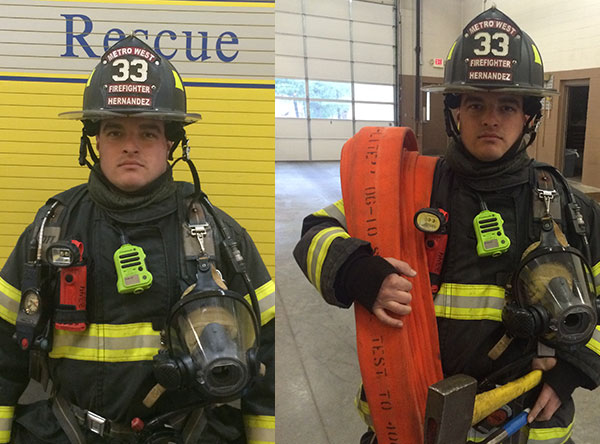
By Brian Zaitz
We all know the importance of expectations. They provide the framework for success both in the firehouse and the fireground. One expectation is how we arrive on the fireground; we expect it, but how often do we review it and train on it? The idea that you fully gear up on alarms, you are equipped and know the functionality of the radio, and you have the correct tools for the job. When and if we do review this critical expectation, do we expand outside the “first-due” scenario? What if we arrive second, or we are responding to a “check the building” call? Have we prepared our crews for what we expect and set them up for success?
The Basic – PPE, SCBA, Radio, Flashlight
Seems simple, but we still need to review the basic setup. This includes full personal protective equipment (PPE), self-contained breathing apparatus (SCBA), radio, and flashlight. We need to remind and drill our crews on the essentials to be worn on every fire and, yes, every automatic alarm or check the building. It is not a fire until we arrive and determine that is the case. After all, we are the fire service.
First Due – Nozzle/Irons
First due, probably the most reviewed and drilled-on item in the fire service. This function is traditionally responsible for fire attack. For this reason, the firefighter should report with a set of irons and a handline. Many would argue that a firefighter with the nozzle should not concern himself with the irons, and in an ideal world that would be the case. The reality is, however, that many departments don’t have distinct truck and engine companies, much less the staffing required for single jobs on the fireground. Likewise, it makes sense to have those tools pre-staged and available for the job at hand.
Second Due – Search Rope, Hook and Halligan
Some may say this, too, is a truck function or truckie work, but as previously stated many of us do not have dedicated trucks and engines. Even if this is the case, these second-due tools provide the options for success. If needed, these tools allow for outside ventilation in coordination with the fire attack crew. The search rope provides the option for a quick, efficient primary search. If the fire is knocked out prior to the second due’s arrival, the crew can use the hook and halligan to assist with overhaul and checking for extension. Again, the option is determined by scene conditions not determined by what you decided to bring (or not bring) to the fire.
Automatic Alarm – High Rise Kit/Irons
These alarms can often develop complacency in the crews. After responding again and again to the same location or building style, it is easy to fall into the rut of coming off the truck with no gear, no tools, and unprepared for action. As stated, there is no fire until we determine there is no fire. The cache of irons and high-rise kit allow for the forcible entry of a fire room as well as control and extinguishment via a standpipe connection. It is imperative to both review and train for this operation, as this is a true coordinated effort between the standpipe connection outside and the fire attack inside.
Check the Building – Water Can, Hook, and Halligan
This routine alarm is anything but; we receive calls to check the building for unusual odors, smoke alarms sounding, and the famous odor of smoke. Again having a predetermined response improves operations and functionality on the scene. The hook provides for opening walls or scuttles to check for fire or extension. The halligan provides a forcible entry option, if needed, and the water can is used to control small fires, which are often found to be the cause of these alarms.
The key with anything is to set you and your crew up for success prior the alarm. The more we can preplan, pre-stage, and predetermine prior the alarm, the more efficient, effective, and safer we will perform on the fireground. Take the time today to review your assignments with your crews and make certain the expectations are set.
Download this training bulletin as a PDF HERE (303 KB)
 Brian Zaitz is a 14-year student of the fire service, currently assigned as the captain/training officer with the Metro West (MO) Fire Protection District. Brian is an instructor with Engine House Training, LLC as well as instructor at the St. Louis County Fire Academy. Brian holds several degrees, including an associates in paramedic technology, a bachelors in fire science management, and a masters in human resource development. Brian is currently and accredited chief training officer and student of the National Fire Academy’s Executive Fire Officer Program.
Brian Zaitz is a 14-year student of the fire service, currently assigned as the captain/training officer with the Metro West (MO) Fire Protection District. Brian is an instructor with Engine House Training, LLC as well as instructor at the St. Louis County Fire Academy. Brian holds several degrees, including an associates in paramedic technology, a bachelors in fire science management, and a masters in human resource development. Brian is currently and accredited chief training officer and student of the National Fire Academy’s Executive Fire Officer Program.
MORE THROW BACK TO BASICS


